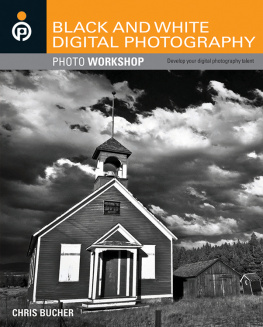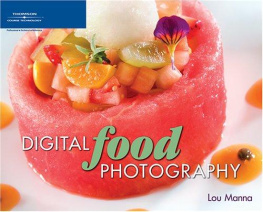\nBruce Barnbaum is recognized as one of the world's finest landscape and architectural photographers, and for decades has been considered one of the best instructors in the field of photography. This latest incarnation of his textbook, which has evolved, grown, and been refined over the past 35 years, will prove to be an ongoing, invaluable photographic reference for years to come. It is truly the resource of choice for the thinking photographer."/>
The Art of Photography: An Approach to Personal Expression
Bruce Barnbaum
Copyright 2011
Bruce Barnbaum, www.barnbaum.com
Editor: Gerhard Rossbach
Project Editor: Joan Dixon
Copyeditor: Cynthia Anderson
Layout and Type: Petra Strauch,
Cover design: Helmut Kraus, www.exclam.de
Cover photo: Bruce Barnbaum
1st Edition (2nd Printing, Jan 2011)
All photography Bruce Barnbaum (unless otherwise noted)
Photographic Arts Editions in cooperation with:
Rocky Nook Inc.
www.rockynook.com
Library of Congress Cataloging-in-Publication Data
Barnbaum, Bruce, 1943
The art of photography : an approach to personal expression / Bruce Barnbaum. -- [Rev. ed.]
p. cm.
First published 1994.
ISBN 978-1-933952-68-0 (alk. paper)
1. Photography, Artistic. 2. Photography. I. Title.
TR642.B364 2010
770--dc22
2010015511
Distributed by OReilly Media
1005 Gravenstein Highway North
Sebastopol, CA 95472
Many of the designations in this book used by manufacturers and sellers to distinguish their products are claimed as trademarks of their respective companies. Where those designations appear in this book, and Rocky Nook was aware of a trademark claim, the designations have been printed in caps or initial caps. They are used in editorial fashion only and for the benefit of such companies; they are not intended to convey endorsement or other affiliation with this book.
No part of the material protected by this copyright notice may be reproduced or utilized in any form, electronic or mechanical, including photocopying, recording, or by any information storage and retrieval system, without written permission of the copyright owner. While reasonable care has been exercised in the preparation of this book, the publisher and author assume no responsibility for errors or omissions, or for damages resulting from the use of the information contained herein.
This book is printed on acid-free paper.
Rocky Nook
Acknowledgements
FEW BOOKS ARE THE WORK OF ONE PERSON in complete isolation from the rest of humanity. This book is no exception, and I would like to thank the many individuals and organizations that have been helpful in putting it together.
First, I wish to thank the workshop participants who read my early papers and manuscripts, gave me encouragement to expand my writing concepts, and suggested additional topics to be considered. Other workshop participants pointed out errors, suggested improvements, and identified segments that were unclear upon initial reading. Altogether, the quality of the book rests upon these hundreds or even thousands of co-editors who helped me improve my writing over the past 35 years.
Second, I must commend and praise my very close friend, Bennett Silverman, who worked with me on digital approaches to photography and fed me the information needed for .
A number of individuals have been a great help by supplying me with ideas over the years. These ideas have subsequently been incorporated into my photographic thinking, and therefore into this book. Prime among them are:
Jay Dusard, who introduced me to potassium ferricyanide bleaching of prints, and who has been a great friend, a fabulous workshop collaborator, and my best honest critic;
Ray McSavaney, who helped me start my first private workshop program and gave me the idea of extremely dilute negative developer solutions (the compensating development technique) to greatly control negative contrast;
Don Kirby, who has not only taught numerous workshops with me, hiked and photographed with me, rappelled into Lower Antelope Canyon with me long before it became grossly commercialized, and camped with me throughout much of the unsurpassed Utah Canyon Country, but who has also given me great insight into the value of negative masking and helped me expand my creative and instructional abilities;
Heike Maskos, a workshop student who has worked closely with me on previous editions of this book, making it read better and look better, and who has been of greater help than she will ever recognize or admit;
Keith Logan, who gave me information about Ilfochrome printing techniques, including several he developed himself;
Reed Thomas, a wonderful friend and sometimes workshop co-instructor, who has opened up my eyes and thoughts to alternative ways of seeing any scene;
Morten Krogvold, who has inspired me with his powerful imagery and his ability to motivate photographers to higher achievements, and to touch them to the core of their souls;
Photo Techniques magazine, which published the eight articles that became Chapter 13 as part of my Master Printing Class column that had appeared in the magazine for almost 20 years;
And, above all others, my wife, Sonia Karen, who has made the good things throughout my photographic career possible by thoroughly supporting me and helping me in all phases of my endeavors. She is the quiet, lovely gem of my life!
To each of them, and to everyone else who has given me ideas, techniques, and tips of all sorts, I wish to say thank you for your contributions to this book.
Chapter 1. Communication Through Photography
PHOTOGRAPHY IS A FORM of non-verbal communication. At its best, a photograph conveys a thought from one person, the photographer, to another, the viewer. In this respect, photography is similar to other forms of artistic, nonverbal communication such as painting, sculpture, and music. A Beethoven symphony says something to its listeners; a Rembrandt painting speaks to its viewers; a Michelangelo statue communicates with its admirers. Beethoven, Rembrandt, and Michelangelo are no longer available to explain the meaning behind their works, but their presence is unnecessary. Communication is achieved without them.
Photography can be equally communicative. To me, the word photograph has a far deeper meaning than it has in everyday usage. A true photograph possesses a universal quality that transcends immediate involvement with the subject or events of the photograph. I can look at portraits by Arnold Newman or Diane Arbus and feel as if I know the people photographed, even though I never met them. I can see landscapes by Ansel Adams, Edward Weston, or Paul Caponigro and feel the awesomeness of the mountain wall, the delicacy of the tiny flowers, or the mystery of the foggy forest, though I never stood where the tripods were placed. I can see a street photograph by Henri Cartier-Bresson and feel the elation of his decisive moment, captured forever, though I was not beside him when it occurred. I can even see a tree by Jerry Uelsmann floating in space and feel the surrealistic tingle that surrounds the image. I can do this because the artist has successfully conveyed a message to me. The photograph says it all. Nothing else is needed.

An ancient Western Red Cedar tree, thirteen feet in diameter, in the rainforest of Washingtons North Cascade Mountains, cut down a century ago, has been replaced by dozens of tall, skinny trees, which together contain less wood (board feet) than the single cedar contained. None of the new trees are Western Red Cedars. There are no ferns, shrubs, or mosses on the ground, so the replaced forest can support no wildlife. Timber companies say, there are more trees in America than ever before, and theyre right; yet it is an utterly deceptive claim. Its a dead forest; a tree farm. The photograph, near my home, was designed to show the damage of industrial clearcutting, euphemistically called harvesting. No other art form can make such a statement as powerfully as photography.





